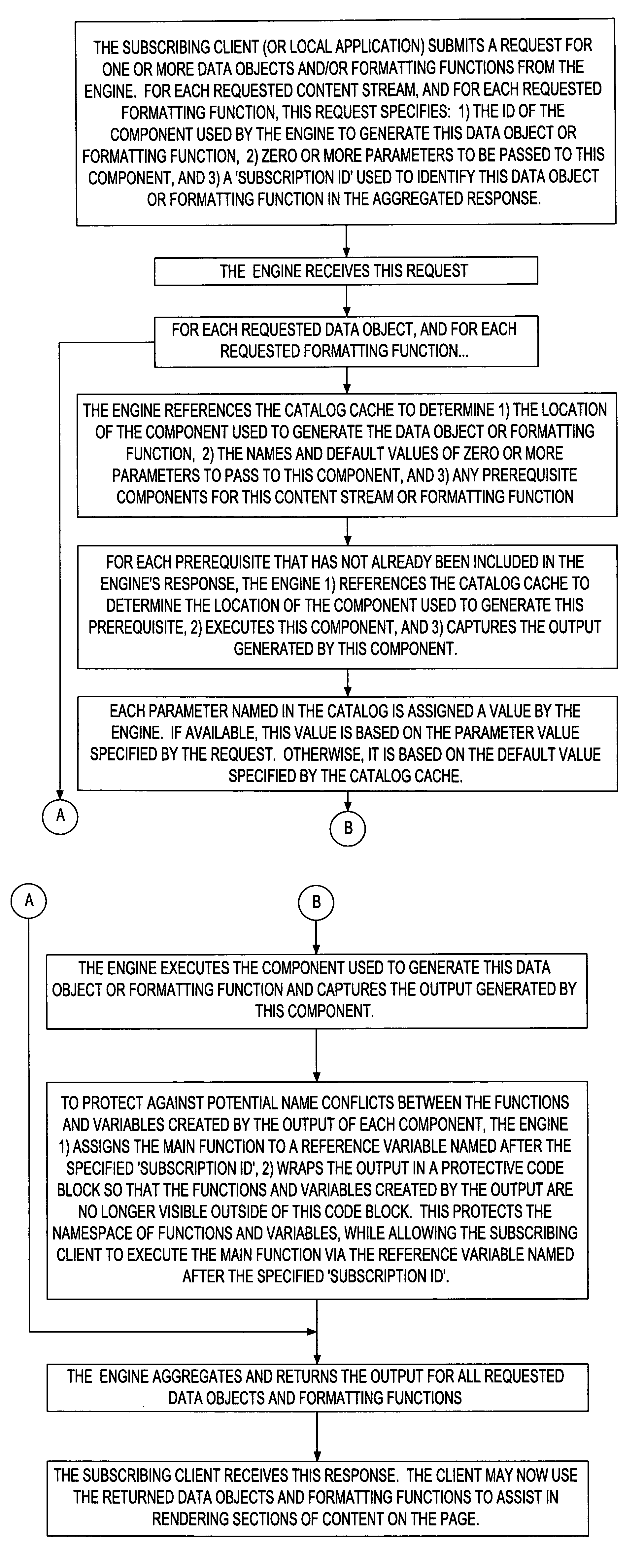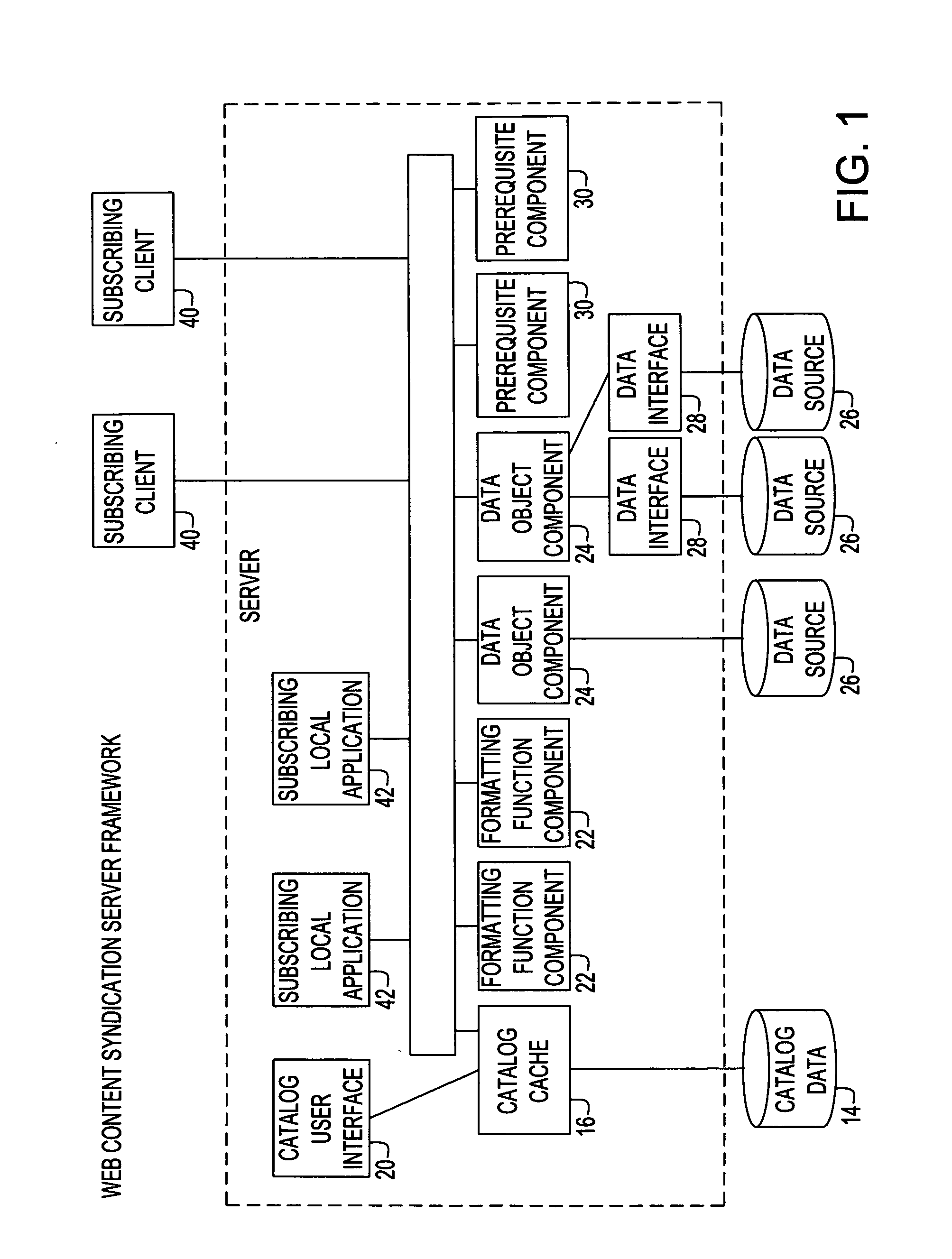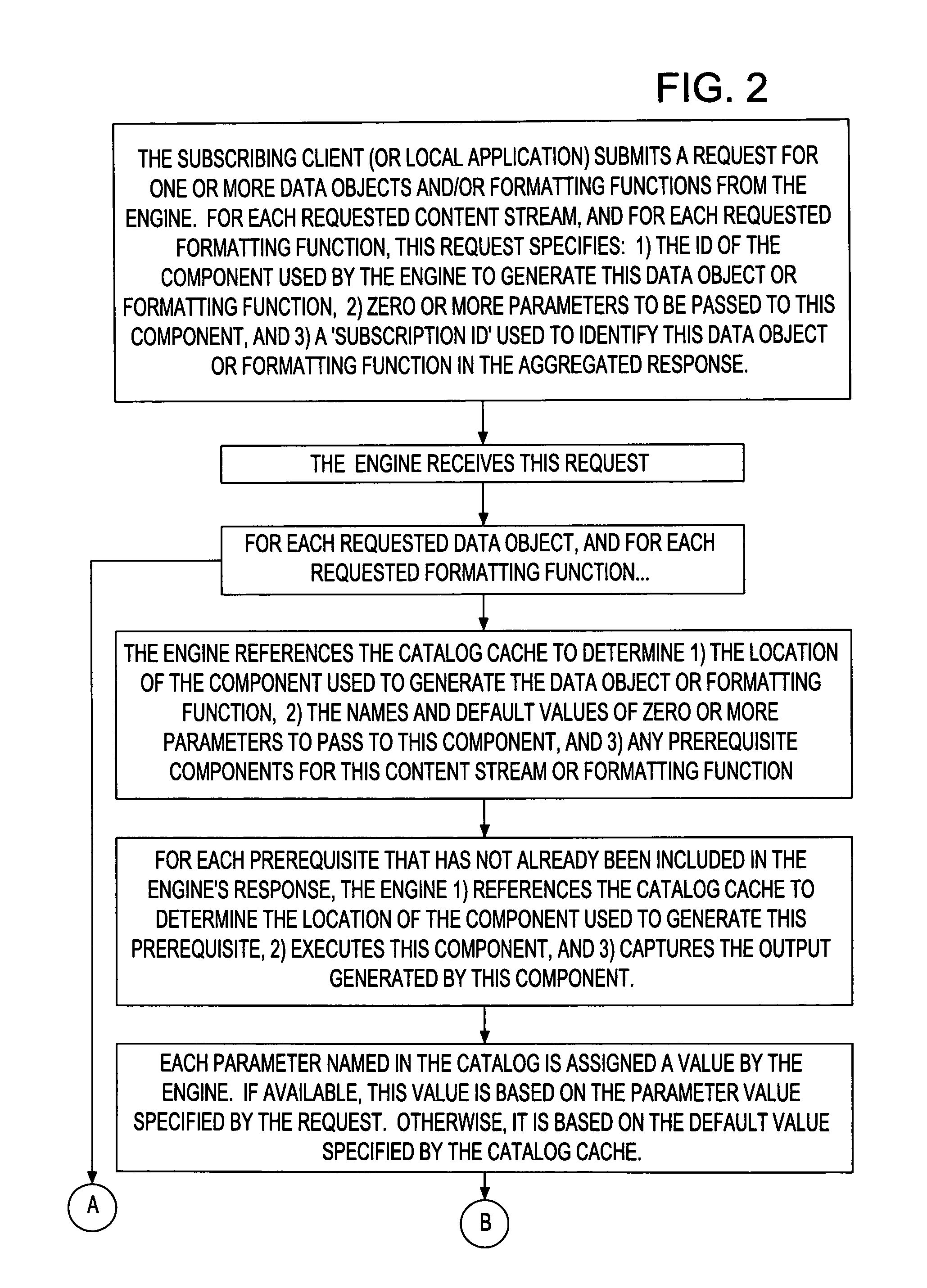System and method for serving multiple data objects and formatting functions in a single request
a data object and formatting function technology, applied in the field of web pages, can solve the problems of requiring manual changes to each page, affecting the quality of data objects, etc., and achieve the effect of convenient request and managemen
- Summary
- Abstract
- Description
- Claims
- Application Information
AI Technical Summary
Benefits of technology
Problems solved by technology
Method used
Image
Examples
Embodiment Construction
[0034]FIG. 1 shows a framework, referred to as the Web Content Syndication (WCS) Server Framework 10, which may be employed in the practice of this invention. This preferred framework 10 comprises an Engine 12, a Catalog 14, a Catalog Cache 16, a Catalog User Interface 20, zero or more referenced formatting function components 22, zero or more referenced data object components 24, zero or more data sources 26 accessed directly or indirectly by one or more of the data object components, zero or more data interfaces 28 that can be used by one or more of the data object components to access a data source, and zero or more referenced prerequisite code components 30. FIG. 1 also shows a group of subscribing clients 40, and a group of subscribing local applications 42.
[0035]The Engine 12 is a program responsible for serving output from requested WCS components to subscribing pages. The Engine allows output from multiple data object components and formatting function components to be aggre...
PUM
 Login to View More
Login to View More Abstract
Description
Claims
Application Information
 Login to View More
Login to View More - R&D
- Intellectual Property
- Life Sciences
- Materials
- Tech Scout
- Unparalleled Data Quality
- Higher Quality Content
- 60% Fewer Hallucinations
Browse by: Latest US Patents, China's latest patents, Technical Efficacy Thesaurus, Application Domain, Technology Topic, Popular Technical Reports.
© 2025 PatSnap. All rights reserved.Legal|Privacy policy|Modern Slavery Act Transparency Statement|Sitemap|About US| Contact US: help@patsnap.com



